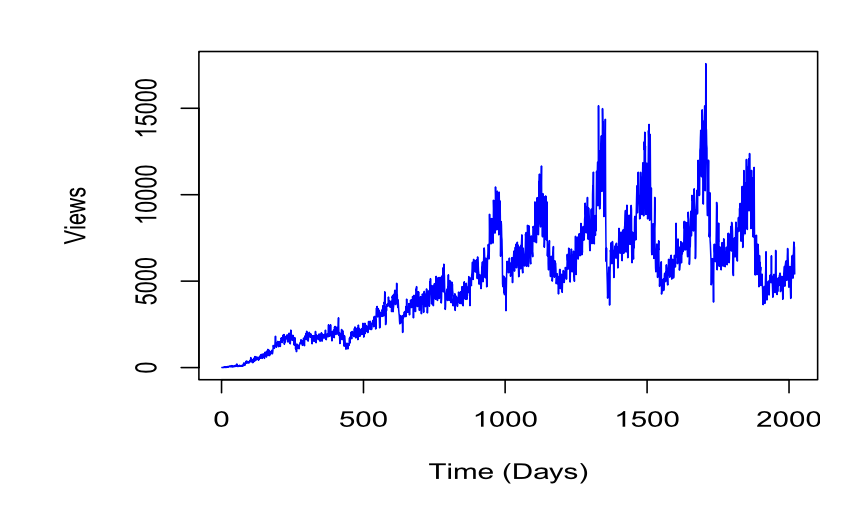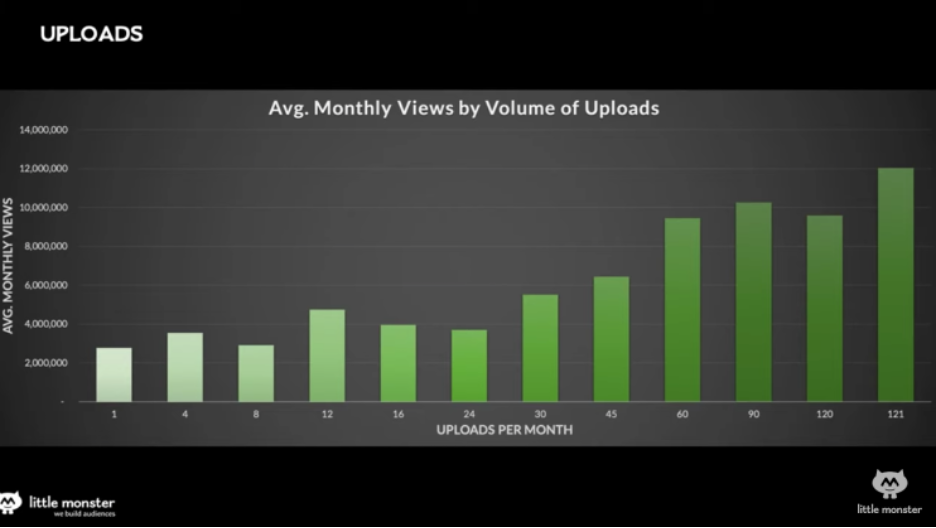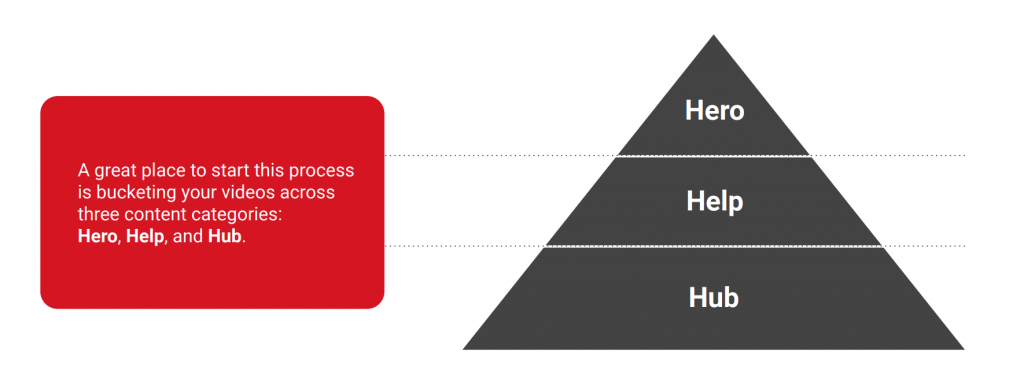Upload videos on a consistent schedule.
Regularly uploading videos seems to influence how the channel performs as a whole (Saurabh, Gautam, 2019). Consistent uploads help to attract more subscribers, which increases the views on the content. However, Saurabh (2019) found no statistically significant difference in channel views between times when videos were uploaded regularly and times when they were not. They theorize that the age of the channel, which might help results show up more often in YouTube’s algorithm, could be balancing out the fact that they did not upload videos regularly in the later part of the studied time frame.

I would theorize, based on this, that for a channel to experience optimum growth, they would indeed need to continue uploading content regularly, to capitalize not only on the age of the channel, but also on the subscribers gained from the fresh content. Three uploads per week seems to be the sweet spot for showing up in the YouTube algorithm (Gielen, 2019). Some channel owners (especially in the “YouTuber” space, where creators are trying to make a living off their videos) upload up to three videos a day, and some channels upload more like one video a month. Gielen (2019) says that somewhere in between seems to get you the most bang for your buck, and he, therefore, recommends uploading 3 videos a week or 12 videos a month.

Seasonality also plays a role for educational videos, with exam season being the peak for views of educational videos (Saurabh, Gautam, 2019). Institutions could use this knowledge to make sure that they’re posting this content in time to hit those exam seasons.
If a channel’s content is aimed at other audiences besides students, seasonality can still play a role. For example, if a higher ed institution’s channel is heavily used for recruitment, they would see seasonal changes around recruitment, decision and matriculation times of year. Duke University’s YouTube channel sees seasonality around commencement, first week of classes and basketball tournaments each year.
Use the Hero, Help, Hub method to program your content.
YouTube suggests using the Hero, Help, Hub method when programming content for your channel.

Hero content is your big, “tent-pole” content– the content that you put a lot of time and effort into and that makes a big splash on your channel for a wide audience. These can be built around a big event or a major idea.
You’ll create less of this content than the other types because it takes a long time to produce or coordinate.
Help content for higher education institutions is usually educational content. It’s best if it’s evergreen (meaning it’s not tied to a specific date or event).
This kind of content can boost subscribers over time as YouTube users discover the content through YouTube’s search functionality. Users are always searching for new educational material!
Hub content is the steady and consistent content that you’re creating most frequently for your YouTube channel. It gives your subscribers something to keep coming back for. It also gives new subscribers a “bank” of content to check out.